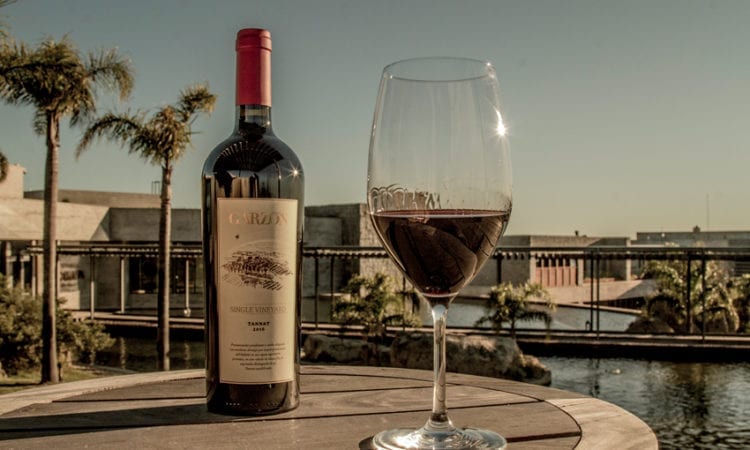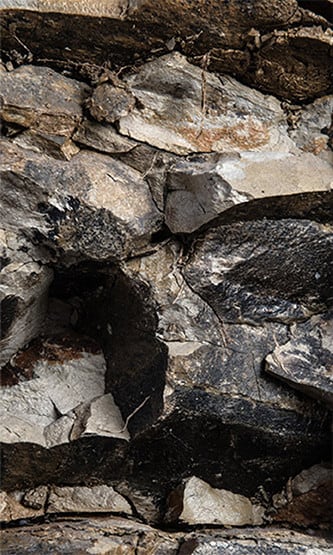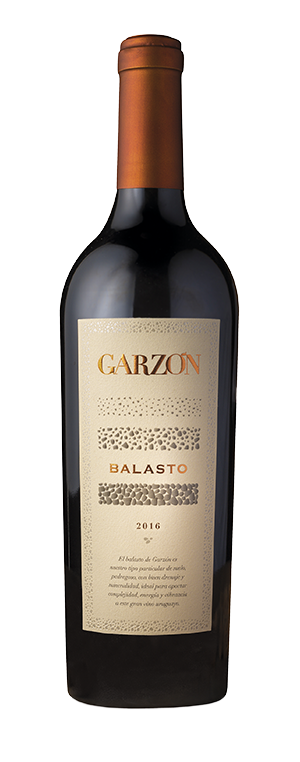Interest and opportunity converged to lead Argentinian businessman Alejandro Bulgheroni to make wine on four continents.
Bruce Sanderson
Issue: November 15, 2018.
Wine Spectator.
A wind farm. An olive grove. The China market. A friend’s advice.
This seemingly random collection of inputs led Argentinian oil and gas billionaire Alejandro Bulgheroni to become one of the world’s leading vintners. And he may be just getting started.
In 2006, the industrial engineer from a family of ranchers stood on a blustery hilltop in Uruguay that he thought might be a good spot for a wind farm. But his advisers suggested vineyards. So Bulgheroni consulted his friend Carlos Pulenta of Bodegas Vistalba in Argentina’s Mendoza region. “[Pulenta] said, ‘Go and talk to Alberto Antonini and do what he says,’?” recalls Bulgheroni.
Antonini, an enologist from Tuscany, has worked with clients around the globe and has more than 20 years of experience in Argentina. He told Bulgheroni the site had potential. But they would have to clear the land, plant vines, make some wine after three to four years. Then, in another three to four years they would see if it was any good.
“I said ‘How old do you think I am?’?” Bulgheroni chuckles.
The trim and dapper Bulgheroni, now 75, has embarked on projects in the past 12 years that most people might not achieve in a lifetime. He founded Bodegas Garzón on that windy hill in Uruguay, then in rapid succession founded or acquired additional wine properties in Argentina, California, Italy, France and Australia. He now runs 13 wineries on four continents for a total of nearly 4,500 acres of vineyards.
And he has spared no expense to make wines from these properties. In addition to Antonini, Bulgheroni hired Michel Rolland and Philippe Melka to oversee the winemaking in Napa Valley, and Rolland also consults for the Bordeaux projects. Though the company declined to supply financial figures for this story, Shanken News Daily, a publication of Wine Spectator’s parent company, M. Shanken Communications, estimates the total global investment at $1 billion, including $200 million in Uruguay alone.
Despite the speed at which Bulgheroni has developed his wine empire, this was not a random buying spree. Though he had different reasons for acquiring each estate, they are all part of a larger plan that extends beyond wine production.
“In the past 12 years, I’ve learned a lot about wine, about the production of high-end wine,” Bulgheroni says. “The next 10 years will be important for the growth of the business. But it’s not only about drinking wine, it’s also to enjoy the experience.”
U-TURN IN URUGUAY
When Bulgheroni’s wife, Bettina, a lawyer and cosmetics entrepreneur, suggested buying some land in Uruguay to have a few horses, he asked, “Why do I need 50 acres?” Today, he owns 50,000 acres in the country, including the 10,600-acre Bodega Garzón, which includes more than 500 acres of vineyards he developed with Antonini.
The venture in Uruguay started as a continuation of Bulgheroni’s family roots in ranching, which began when his father started buying land in the 1960s near the city of Rufino in Argentina’s Santa Fe province, roughly 300 miles west of Buenos Aires. Bulgheroni and his brother Carlos sold that business in 1995. In 1998, he began investing in land in Uruguay. But he had to find a different approach there.
“When we started ranching in Uruguay in 1999, I knew I would never have extensive ranching like we did in Argentina, like the ranches we had in my family all my life,” Bulgheroni says. “So I wanted to have intensive ranching, because Uruguay is a small country and you need to have a special quality and high investment per hectare [2.47 acres].”
Long interested in sustainability and alternative forms of energy, Bulgheroni began exploring the idea of farming with new technology. “I always remember the wind-blower in Argentina, where you pump the water out and produce electricity and in the house you have a big room full of truck batteries that you use during the night,” he recalls, a practice that is still common on ranches in Argentina.
“So my plan was to use sun, wind power and batteries to run an investment-intensive ranching operation [in Uruguay].”
But he and his team soon discovered that the cost of solar power and wind power was too high. So the project transformed into vineyards. The debut vintage was 2010; the winery now produces 120,000 cases of wine annually, focusing on Tannat, Cabernet Franc, Marselan, Pinot Noir, Albariño and Sauvignon Blanc.
Early results are promising. Wine Spectator has reviewed 22 wines from Garzón and five have earned outstanding scores of 90 points or higher, including a pair of Tannats from the unusually hot, dry 2015 vintage.
Just 11 miles from the Atlantic Ocean, about 660 feet above sea level, the Garzón vineyards are planted on decomposed granite called balasto, formed 2.5 to 3 billion years ago. The vines benefit from cool winds off the Atlantic that help offset the effects of an annual rainfall of 60 inches (about 50 percent more than in Bordeaux).
There are 1,150 individual parcels, mapped to the various slopes and exposures, according to managing director Christian Wylie. He feels that Tannat, Uruguay’s signature grape, produces softer tannins on Garzón’s granite than in the heavier clay soils found in Canelones, Uruguay’s major wine region to the south.
Garzón’s flagship red, Balasto, is named after the decomposed granite soils. It’s a blend of 45 percent Tannat, 25 percent Marselan, 20 percent Cabernet Franc and 10 percent Petit Verdot; the inaugural 2015 vintage, priced at $120, rated 91 points. Garzón plans to offer it through the Bordeaux négociant system. “[That pipeline] is the key to making Uruguayan wine known in Asia,” explains Wylie.
Following Leadership in Energy and Environmental Design (LEED) specifications, Bulgheroni and his team have built an impressive facility using local materials and hope to be certified in the next year or two.
But plans for Garzón extend beyond wine; Bulgheroni intends to position the property as a luxury resort. A 120-seat restaurant is helmed by noted Argentinian chef Francis Mallmann as its ambassador and culinary director.
There is also an 18-hole golf course and a sophisticated wine club with on-site storage and other amenities for members “to enjoy life with friends,” says Bulgheroni.
Plans to build a hotel are in the works. “My wife is going to build a hotel,” Bulgheroni says. “She has just agreed on the design with the architects, and maybe this year or next year we’ll start the construction. It’s going to be a boutique, 20-suite hotel.”
The Garzón project allowed Bulgheroni and his team to design and build everything from scratch. His other properties each have their own unique circumstances. However, his goal for them is the same: Offer visitors a special experience that goes beyond simply tasting the wines.
EXPANDING TO ARGENTINA AND THE U.S.
Once he got his feet wet in the wine business, Bulgheroni became more curious and involved as he began to learn about wine.
“I started asking around, and in 2008, at the end of 2008, my friend Carlos Pulenta, who has a winery in Argentina called Vistalba and had been advising me, told me he wasn’t doing very well with his partners,” he recalls. “So I suggested to him that I buy out his partners. Because if I’m going to be in the wine business I have to be in Argentina too.”
y the beginning of 2009, Bulgheroni and Pulenta were 50-50 partners in Vistalba. After investing in Vistalba and other vineyards in Argentina, now totaling 2,680 acres and including the purchase of Bodega Argento in 2011, Bulgheroni’s growing understanding of the wine business led him to the United States. In 2011, he purchased Renwood in California’s Sierra Foothills region.
“It wasn’t a rational thing, where you have a project you started and said, ‘Well, OK, we’re going to do it this way,’?” he explains. “No, it was just going into it little by little. And so, the main market was the U.S. That’s the main market; we should be there. And that’s why I bought Renwood.”
Renwood, founded in 1993 by Robert Smerling, became one of the largest producers in the Sierra Foothills of Amador County, known for Zinfandel, Syrah and Barbera. Its parent companies, Renwood Vineyard Properties and Renwood Group, filed for Chapter 11 in 2009 and sold to Ren Acquisition, Inc., an investment group that includes Bulgheroni and Carlos Pulenta, in 2011. Renwood’s appeal was linked to its specialty in Zinfandel. “Zinfandel is a very minor percentage of the wine consumption in the States, but it’s local,” reflects Bulgheroni. “So it was interesting to do. You know, it’s like Malbec in Argentina, Tannat in Uruguay.”
Though Renwood gained him a foothold in the U.S., Bulgheroni felt the larger potential in the Sierra Foothills was limited. “We have a ranch of 400 acres. We could build something there; we might do something small,” he says. “Also, in the winery we have a tasting area that we enhanced and created a very nice atmosphere and a good experience, but we cannot do much for the time being.”
And besides, he soon learned, there was a larger mountain to climb. “In Napa. It’s Napa Cab.”
It wasn’t long before the allure of Napa Valley drew him to purchase a vineyard there. If Uruguay was starting from scratch in a new terroir, Napa was a known entity where vineyards and grapes were available for a budding wine project. “There are good grape sources, so you can produce good wine immediately,” Bulgheroni told Wine Spectator in February 2017.
The smallest of Bulgheroni’s wineries and the only one to carry his name, Alejandro Bulgheroni Estate, is the former Founders Room for Harlan Estate, the source of The Napa Valley Reserve, a private winemaking club whose membership fee started at $100,000.
Bulgheroni purchased the estate in 2016, but rented the space prior to officially buying it from Bill Harlan. The debut 2014 vintage of the namesake estate was made there.
There is a 2-acre vineyard planted to Cabernet Sauvignon, with an additional 4 acres planned. The Alejandro Bulgheroni Cabernet is a selection of the best barrels, about 10 percent of each vintage; the second-tier wine is called Lithology and highlights different AVAs and vineyards around Napa. Melka and Rolland rely on assistant winemaker Matthew Sands to handle day-to-day duties.
BThe inaugural bottlings rated 93 points for the flagship Cabernet Sauvignon Napa Valley 2014 ($300) and 92 points for the Cabernet Sauvignon Oakville Lithology Beckstoffer To Kalon Vineyard 2014 ($125). The 2015s rated 94 and 90 points, respectively. Bulgheroni has set the bar high. “We will do everything we can to make the best wines. There are no limits,” he emphasizes.
However, even the Napa project needed some investment. A road was built to access the vineyards on the hilltop, where Bulgheroni plans to build a tasting area.
ALL IN ON TUSCANY
It was olive oil that first drew Bulgheroni to Tuscany.
In 2002, he decided to plant olive trees and produce oil at Bodega Garzón. By 2008, the quality was very good. But Uruguay was hardly known as a producer of olive oil. “We could have oil as good as an Italian olive oil, but coming from Uruguay nobody pays attention,” laments Bulgheroni.
So he decided to go to Italy and buy some olive trees. “In that way, I can be perceived as an Italian olive oil producer that has a leg in Uruguay, and that will help in the marketing,” he concludes. “That’s how I ended up with Dievole.”
Dievole, located in the Castelnuovo Berardenga township of Chianti Classico, is an ancient estate whose history goes back to 1090. It consists of 16 different parcels of vines, totaling 198 acres of mainly Sangiovese, as well as 22 acres of olive trees.
The purchase of Dievole in 2012 satisfied both Bulgheroni’s quest for olive oil and Antonini’s search for good Chianti Classico terroir. So far, the wines have shown well. The Chianti Classico Vigna di Sessina Gran Selezione 2015 (93, $59) offers typical flavors of cherry, currant, licorice, iron and tobacco, with burly tannins.
According to Bulgheroni, despite his having “no plan” beyond Dievole, the draw of Tuscany proved very strong. His ancestors came from Italy, and he and Bettina share a love of Tuscany.
The fact that Antonini is a Tuscan native was an added bonus. “[Bulgheroni] wanted to focus on the premium wine areas, so I told him that it would be a good idea to look at Montalcino, Chianti Classico and Bolgheri,” says Antonini.
“I was just talking to friends, talking about opportunities, listening to [Antonini],” recalls Bulgheroni. “Well, if we are in the best terroir for Chianti Classico [at Dievole], we should produce something in Montalcino, because Brunello is considered the best wine in Italy. So that’s how Poggio Landi happened, and then Podere Brizio.”
Poggio Landi (2013: 92, $60) was acquired from Fattoria dei Barbi in December 2012, and Podere Brizio (2013: 93, $59) in 2013, establishing Bulgheroni in the region. Landi comprises 185 acres of vineyards located north of the town of Montalcino, on the eastern edge, near Torrenieri, and in the southern part of the zone around Castelnuovo dell’Abate. The wine is a blend of these sites and the more approachable of the two Brunellos.
Brizio occupies 28 acres near Tavernelle in one of Montalcino’s prime terroirs, near Caprili and Gaja’s Pieve Santa Restituta. It delivers more complexity, density and structure.
The fourth leg came in 2015, when Bulgheroni purchased Tenuta I Pianali in Bolgheri from Lodovico Antinori. He renamed it Tenuta Le Colonne and plans to expand the site, which is currently at 67 acres. An additional 173 acres will be planted, devoted to international varieties Cabernet Sauvignon, Cabernet Franc, Petit Verdot, Merlot and Syrah.
“We have to develop it,” he asserts. “It’s going to take three more years, but the area is very good, the terroir is very good, the location is very good, so eventually we’ll produce some good wines.”
The team is building a hotel at Dievole to enhance the wine lifestyle and offer amenities to visitors. Podere Brizio has been renovated, though on a smaller scale. Between the four estates, there will be a total of 865 acres under vine.
Under Antonini’s direction, the Italian estates seek to express their specific areas. At minimum, that demands organic farming and noninterventionist winemaking. “The idea is to make very classic wines,” Antonini explains. “That means expressing the integrity of the terroir. So we are organic and biodynamic.” If all goes well, the properties will earn organic certification this year.
Antonini’s approach in the cellar is light-handed, an amalgamation of more than 35 years of experience, beginning with his family winery, Poggiotondo, itself in the Chianti region of Italy, and winemaking stints with Frescobaldi, Col d’Orcia and Antinori before starting his consulting business.
He begins by picking ripe, but not overripe, grapes. Fermentation in concrete tanks with gentle temperature control allows the indigenous yeasts to do their job. The maceration on the skins is two to three weeks on average, followed by aging in cask or barrel, but no new oak. “I don’t believe we need to add the flavor of barrels,” says Antonini. “What you gain from micro-oxygenation, you lose in freshness.”
Antonini is enthusiastic about working with Bulgheroni. “I never imagined I would have this opportunity to work in all these great places,” he states. “Mr. Bulgheroni has given us all the tools to make great wines, so there are no excuses.”
SPANNING THE GLOBE
Bulgheroni seems to have a talent for bank shots, for letting an interest ricochet into a different business altogether. In Uruguay, it was wind; in Tuscany, olives. His drive to break into the China market led him to Bordeaux.
“I wanted to be in China, because I thought that would be a very big market in the future,” explains Bulgheroni. “For the Chinese market, French wines are number one, they have always been. So I thought if we go to the Chinese market and we don’t have a French wine, we would be lacking something.”
In 2013, Bulgheroni contacted renowned wine consultant Michel Rolland for advice. The Frenchman suggested the Argentinian focus on Bordeaux.
“I didn’t want to spend a lot of money, and of course we couldn’t apply for the best terroirs because they were taken and very expensive,” Bulgheroni admits. “So we decided to buy some other places, reasonable prices and with reasonable wine.”
In short order, Bulgheroni acquired two estates in the Côtes de Bordeaux-Château Suau and Château Langalerie-in 2013. And he engaged Rolland to oversee them.
The 164-acre Château Suau appealed to the team for its proximity to the Garonne River. The vineyards have been converted to organic cultivation. Bulgheroni is optimistic: “It looks like in the future we’ll produce even better wines here with the control of [Rolland].”
At the same time, a very good opportunity presented itself at Château Langalerie. Of the 145 acres planted to vines, 130 have been replanted, mainly to Cabernet Sauvignon. Only 15 acres of old vines were kept. The wines will be bottled under the second label, Château de Bleyzac, until Bulgheroni feels the quality merits the Langalerie name.
Langalerie will focus on Cabernet Sauvignon, while Suau is primarily Merlot. “So maybe in the next two to three years, we’ll come out with some decent Bordeaux wines that will help us with our business in China,” he says.
The most recent acquisition is Alkina Estate in Australia, purchased in 2015. The 100-acre estate, located in the Barossa Valley, came with 15 acres of old vines and 15 acres planted in 1998. An additional 39.5 acres were bought in an auction in early 2017, 44.5 more acres are being planted, and Bulgheroni is constructing a winery on the property.
With most of his properties, Bulgheroni’s goal is to go beyond wine production to develop destinations for wine tourism. “In both the northern and southern hemispheres, we are trying to find a synergy for people to have a great experience,” he explains.
He understands the need for balance and is committed to building communities and improving the conditions of his workers as well. His new project in Patagonia is a case in point.
Bodegas Sarmiento is located in Sarmiento in the province of Chubut. Bulgheroni initially went there for the oil, but decided the area could benefit from diversification. He found some undeveloped land and with the assistance of terroir consultant Pedro Parra conducted a soil study that returned promising results for agriculture, including vineyards.
“I wanted to give the possibility of work for the women and young men who are not ready for the oil business, and in that way it would help the people of the community,” he explains. “So we started planting 27 or 30 different fruits, to see how they would progress.” His team also planted grapes, including some Gewürztraminer that Bulgheroni hopes to use for ice wine.
A LONG JOURNEY HOME
Alejandro Pedro Bulgheroni was born in Rufino, Argentina, in 1943, a small town in an important farming area. His great-grandfather came to Argentina from Lombardy, Italy, in 1868. He worked for a British-owned railroad as a crew foreman. When the railroad from Buenos Aires got to Rufino, he decided to stay there.
“The legacy from my great-grandfather was work, and he left a very strong-how would you say-discipline, for the family, of education and work,” recalls Bulgheroni. “He also gave us a lot of solid values for the family. We kept all those values, and they helped us a lot in our life.”
The family stayed in Rufino, and Alejandro’s grandfather became a farmer there. His father took over, and then in 1948 created the company Bridas with some friends, developing different types of businesses until the late 1950s, when he went into the oil industry, primarily as a service provider.
Bulgheroni recalls a happy childhood in Rufino, where his brother Carlos and sister Mercedes were born. When he was 10 years old, his family moved to Buenos Aires.
“One day, my father called us when I was 15, my brother Carlos a little younger, and he said, ‘I’m very well-off. I don’t need to work anymore. I can give you the possibility to study. I can give you a good standard of living, and that will be your life.’ But he also said, ‘If you tell me you are going to continue what I was doing, I will continue working for you now.’ Immediately, we said yes. That was a very tough contract at 15 years old, and it was good for us.”
At the time, Bulgheroni and his brother believed their father and accepted the agreement, only to realize later that he would never have retired.
Bulgheroni spent the summer of 1964 in the oil field, and in 1965, at age 22, started to work in the family company. In 1967, he earned an industrial engineering degree from the University of Buenos Aires, then went to the United States to do some courses in drilling and oil and gas production at University of Texas extension services.
After their father died in 1985, Bulgheroni and Carlos, a lawyer, moved the business into oil and gas production, developing Bridas into the largest private energy company in Argentina. In 2011, the brothers sold a 50 percent stake in Bridas to the Chinese National Offshore Oil Company. Carlos died in 2016. Mercedes stayed in the ranching business.
Forbes lists Alejandro Bulgheroni’s net worth at $2.7 billion, making him the wealthiest person in Argentina. He is currently the chairman and CEO of several agro-industrial companies and chairman and president of other energy-related companies.
He and Bettina have seven children and stepchildren: Alejandro Andres, 49, Mariana, 46, Juan Martin, 43, Patricio Nicolas, 37, Maria Jose, 34, Diego Marcos, 30, and Alejandro Pedro, 20.
His desire is that his children continue what he has started in the wine business. They have already become involved. “Of course they are just starting to do it and they like it,” he says, before adding, “I’m hoping they will be a part of that and continue. I’m 75. I won’t be here forever.”
Stretching from Patagonia to Barossa, Bulgheroni’s portfolio is impressive, not least for its scope and the speed with which he created it. And he has built it sustainably, or converted to sustainable practices where conventional means already existed.
It remains to be seen how the estates will develop and whether Bulgheroni’s visions for wine tourism will play out. The degree of success he can attain with the wines themselves also stands unresolved. He has laid the groundwork. The next decade will determine the progress and quality of the wines. He has decided not to make any more investments in new estates for now. “Now we have to complete the other half of the work,” he says. “We have to go out and sell the wines.”
Bulgheroni himself became interested in wine late in life. He was exposed to it through his Italian upbringing, but never really drank much. Now, immersed in the wine business, he’s started collecting. “I just finished my cave at the ranch [in Uruguay],” he confides, “so I’m taking wine from different places, my own wines, and then I’m buying some good wines. I have room for about 5,000 bottles. It’s going to take a few years to fill it up.”







